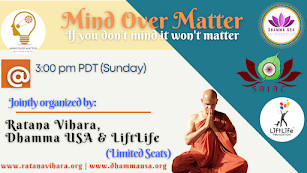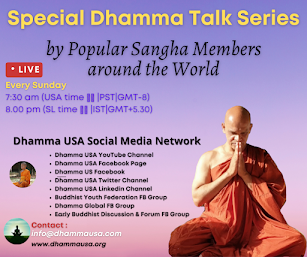Sinhala & Hindu New Year - 2017
Lankarama Buddhist Institute
La Puente - CA 91744
Los Angeles Buddhist Vihara
920 N Summit Ave, Pasadena, CA 91103
Dharmavijaya Buddhist Vihara
1847 Crenshaw Blvd, Los Angeles, CA 90019
Traditional Sinhala Alut
Avurudu Ceremony
Different parts of the world celebrate New Year in a different
way, in some countries; the time of celebration also differs. New Year in
Sinhalese or Sri Lanka, popularly called Aluth Avurudu, is observed on the 13th
and 14th of April every year.
It is a solar festival that begins as the Sun enters to the zodiac of Aries or Mesha. Interestingly this celebration takes place at the spring and mother Nature showers all her blessings to the Sinhalese during the period, signifying the beginning of the New and the end of the old.
A number of customs and
traditional beliefs are associated with the New year celebrations in the
country. The Sinhalese are influenced by astrological faiths and perform
several religious practices during this time. In villages, several women gather
and play drums to announce the advent of the New Year.
The customs begin with
Nonagathe that starts few hours before the New Year rolls in and you are
supposed to perform the rituals with a pure mind. People visit to temples,
donate food and clothes to the poor and pray for a prosperous year ahead.
Traditionally, people take the Holy Bath before the sun sets on the last day,
with the herbal mixture called “Nanu” replacing the soap. They believe that
this purifies their bodies as well as the soul and they are able to welcome the
New Year with an auspicious mind.
Many Sinhalese clean
their houses before the New year comes just to wash away the evils of the
previous year. after completion, the holy Saffron water is sprinkled in the
house for purification. “Kolam” or special decorative designs are drawn with
white rice flour or coconut for auspicious reasons. Among the other customs
people light fires, and prepare the traditional milk rice for family members.
Milk is considered to be auspicious for them and brings prosperity if spills
over the pot.
The housewives cook
traditional meals like hath maluwa or a curry with 7 different flavors. Several
sweets are prepared for the entire family. the head of the household prepares
the traditional pot with 5 mango leaves and one coconut, popularly known as the
“mangalam kumbam”. All the members of the family have lunch together to
celebrate the arrival of the New year. they eat the traditional food like small
oil cakes called kaung or crispy light sweetmeats called the kokis.
The young members touch
the feet of the elders to seek blessings. They also offer betel to the elders
to show their gratitude and respect towards them. some local Srilankans play
games called “Guddu” with friends and family members as a part of the tradition
of bringing good luck. It is considered to be the best time to start off with a
new business as well as wedding ceremonies. People also follow the tradition of
gifting clothes to the loved ones as a token of love and affection. These
customs seem to have glued the people belonging to the Sinhalese community
together promoting harmony and brotherhood.


















































0 comments:
Post a Comment
Your comments and feedback are very helpful to us in improving our posts. We really appreciate your time. Thank you!
Dhamma USA Team.